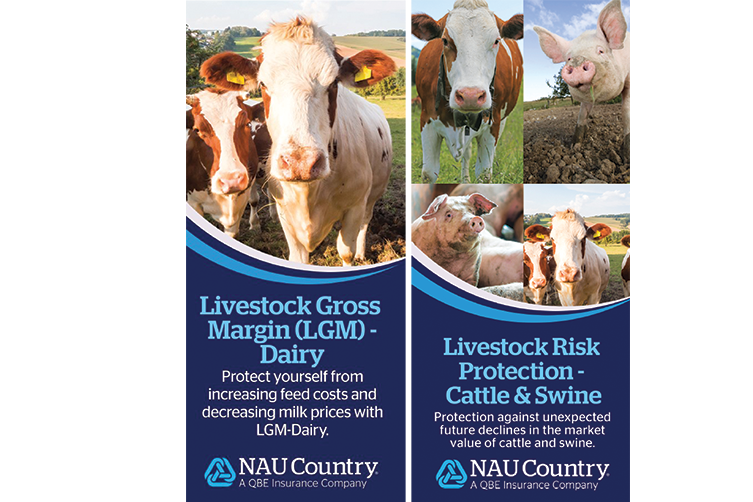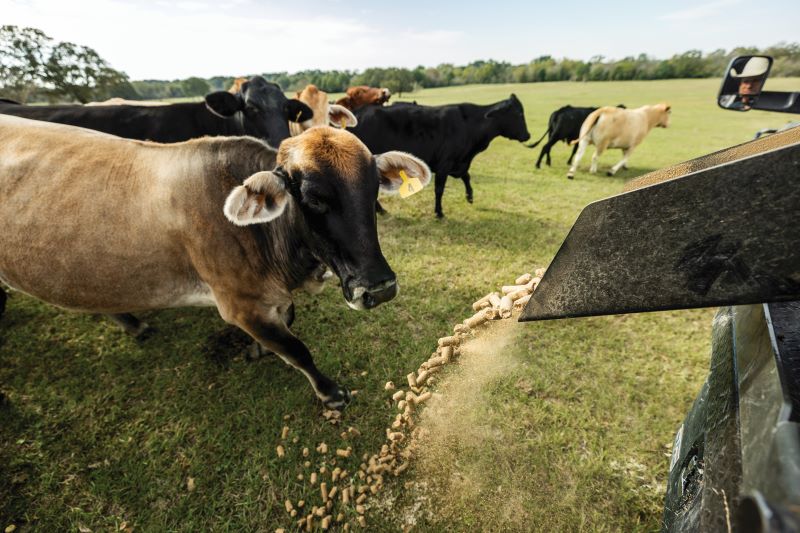Safeguard Your Livestock With Animals Threat Defense (Lrp) Insurance Policy
Animals manufacturers encounter a myriad of challenges, from market volatility to unpredictable climate condition. In such a vibrant environment, safeguarding your animals comes to be vital. Animals Threat Security (LRP) insurance coverage offers a strategic tool for manufacturers to shield their financial investment and reduce prospective financial threats. By comprehending the ins and outs of LRP insurance, producers can make informed choices that secure their incomes.

Understanding Animals Risk Security (LRP) Insurance Policy
Livestock Danger Defense (LRP) Insurance offers crucial insurance coverage for livestock manufacturers versus possible economic losses because of market value fluctuations. This kind of insurance coverage enables manufacturers to alleviate the threat linked with unpredictable market problems, ensuring a level of financial safety and security for their procedures. By utilizing LRP Insurance policy, manufacturers can secure a minimum price for their livestock, protecting versus a decrease in market value that could negatively impact their revenue.
LRP Insurance coverage operates by supplying coverage for the difference in between the insured rate and the real market rate at the end of the insurance coverage period. Manufacturers can pick coverage levels and insurance coverage periods that line up with their certain requirements and take the chance of tolerance. This flexibility permits manufacturers to customize their insurance policy to finest safeguard their financial passions, supplying comfort in an inherently unstable market.
Comprehending the intricacies of LRP Insurance policy is critical for livestock producers seeking to protect their procedures versus market uncertainties. By leveraging this insurance coverage tool efficiently, producers can navigate market fluctuations with confidence, ensuring the long-term stability of their animals services.
Benefits of LRP Insurance for Animals Producers
Enhancing economic protection and stability, Animals Risk Security (LRP) Insurance policy supplies important safeguards versus market value fluctuations for manufacturers in the animals industry. One of the essential advantages of LRP Insurance is that it offers producers with a tool to manage the risk connected with unpredictable market rates. By enabling manufacturers to set a guaranteed rate flooring for their livestock, LRP Insurance policy helps shield against possible losses if market costs drop below a certain level.
Additionally, LRP Insurance policy enables producers to make more educated choices concerning their operations. With the guarantee of a minimum cost for their livestock, producers can plan ahead with higher confidence, recognizing that they have a safeguard in location. This can lead to boosted security in revenue and decreased monetary stress and anxiety during times of market volatility.
Just How LRP Insurance Mitigates Financial Risks
By supplying manufacturers with a trusted safeguard versus market value variations, Animals Danger Defense (LRP) Insurance efficiently safeguards their economic stability and reduces prospective risks. One key means LRP insurance coverage aids mitigate economic dangers is by supplying protection against unanticipated declines in animals costs. Producers can buy LRP policies for specific weight ranges of animals, permitting them to hedge versus market downturns that might otherwise cause significant financial losses.
Moreover, LRP insurance coverage gives producers with assurance, understanding that they have a predetermined level of rate protection. This certainty allows manufacturers to make enlightened decisions concerning their procedures without being unduly affected by uncertain market fluctuations. In addition, by decreasing the financial uncertainty connected with rate volatility, LRP insurance policy allows producers to much better plan for the future, designate sources effectively, and eventually boost their total monetary durability.
Actions to Secure LRP Insurance Policy Coverage
Protecting LRP insurance policy protection involves a series of straightforward steps that can give producers with important security against market uncertainties. The first action in getting LRP insurance is to get in touch with a qualified crop insurance policy representative.
When the application is sent, manufacturers will certainly require to pay a costs based on the insurance coverage level and number of head insured. It is vital to evaluate and understand the plan completely before making any type of repayments to guarantee it satisfies the specific requirements of the operation. Bagley Risk Management. After the premium is paid, manufacturers will certainly receive a certification of insurance policy, recording their protection
Throughout the protection period, manufacturers must maintain in-depth records of their livestock supply and market value. In the occasion of a price decrease, manufacturers can submit a claim with their insurance policy agent to receive settlement for the distinction between the insured rate and the market price. By adhering to these actions, producers can secure their livestock procedure against financial losses brought on by market changes.
Making The Most Of Worth From LRP Insurance Policy
To draw out the complete benefit from check my source Animals Danger Protection Insurance policy, producers need to tactically utilize the protection options readily available to them. Making best use of the value from LRP insurance policy includes a detailed understanding of the policy attributes and making educated decisions. One vital approach is to carefully evaluate the insurance coverage levels and duration that finest align with the particular needs and threats of the animals procedure. Producers must likewise on a regular basis assess and change their coverage as market problems and risk variables develop.
In addition, producers can enhance the worth of LRP insurance coverage by leveraging complementary risk management tools such as futures and options contracts. By branching out risk administration techniques, manufacturers can mitigate prospective losses extra effectively. It is necessary to best site remain educated about market patterns, government programs, and market growths that can impact animals costs and risk administration techniques.

Ultimately, making best use of the worth from LRP insurance policy needs positive preparation, ongoing surveillance, and versatility to altering conditions. By taking a calculated strategy to run the risk of management, manufacturers can guard their livestock operations and boost their total economic stability.

Final Thought
To conclude, Livestock Risk Protection (LRP) Insurance coverage uses beneficial benefits to animals manufacturers by reducing financial dangers linked with variations in market value. Bagley Risk Management. By safeguarding LRP insurance policy coverage, producers can secure their livestock financial investments and possibly enhance their productivity. Comprehending the advantages and actions to take full advantage of worth from LRP insurance policy is necessary for livestock manufacturers to successfully handle risks and secure their services
Livestock Threat Protection (LRP) Insurance gives important coverage for livestock producers versus prospective economic losses due to market cost fluctuations.Enhancing monetary safety and security and security, Animals Threat Defense (LRP) Insurance policy uses beneficial safeguards against market price fluctuations for manufacturers in the animals industry.By providing manufacturers with a trustworthy safety and security internet versus market cost fluctuations, Livestock Risk Security (LRP) Insurance successfully safeguards their economic stability and recommended you read decreases prospective threats. The very first action in acquiring LRP insurance is to speak to an accredited plant insurance policy representative.In verdict, Livestock Threat Security (LRP) Insurance coverage supplies useful advantages to livestock producers by alleviating financial dangers associated with variations in market rates.